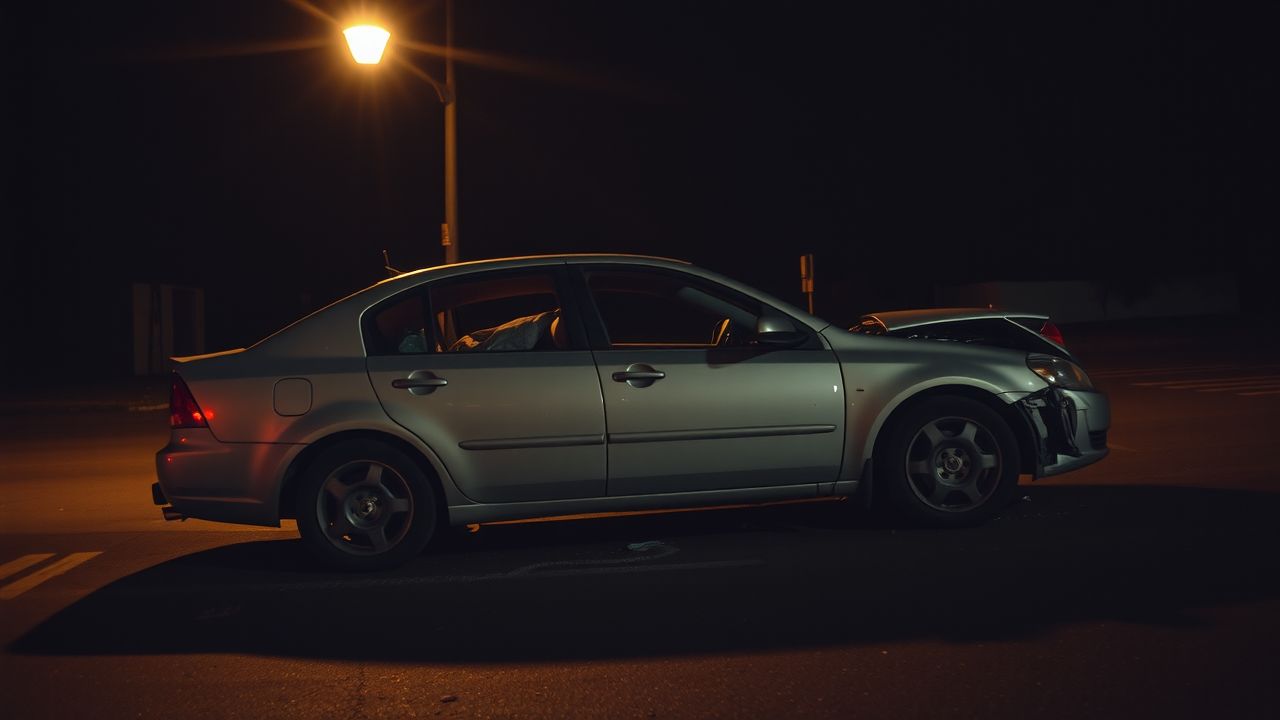Understanding Comparative Negligence In NY Car Accidents

Comparative negligence is a key factor in New York car accident cases. This legal concept influences fault assignment and damage awards. New York uses a “pure comparative negligence” system, allowing injured parties to recover damages even if they are primarily responsible.
In this system, compensation is reduced according to the injured party’s fault percentage.
New York’s Civil Practice Law and Rules Section 1411 outlines how damages are adjusted based on fault levels. This law considers various factors that may contribute to an accident, such as driver errors or vehicle defects.
Knowing these rules is crucial for anyone involved in a car accident in New York.
Fault determination in car accidents often requires thorough investigations. Insurance companies evaluate fault and damages, which can significantly impact settlement outcomes. Strong evidence, including witness statements, medical records, and accident scene photos, can help reduce an injured party’s assigned fault.
Legal representation is essential in comparative negligence cases. Lawyers can help obtain fair settlements and effectively present evidence against claims of increased plaintiff fault by insurers.
Many law firms, like The Bongiorno Law Firm and Frektman & Associates, focus on these cases and offer free case evaluations.
Time limits are critical in New York car accident cases. The statute of limitations for filing personal injury claims is three years from the accident date. Moreover, accidents involving over $1,000 in damages must be reported to the DMV within 10 days, and immediate police reports are required.
This article examines comparative negligence in New York car accidents. Continue reading to learn more about this significant legal concept.
Key Takeaways
- New York follows a “pure comparative negligence” rule, allowing injured parties to seek compensation even if they share fault for the accident.
- Fault in car accidents is determined by juries who review evidence like police reports, witness statements, photos, and expert opinions.
- The amount of compensation a victim can receive is reduced by their percentage of fault in the accident.
- New York’s statute of limitations gives victims three years from the accident date to file personal injury claims.
- Legal representation is crucial in comparative negligence cases to gather evidence, negotiate with insurance companies, and present a strong case in court.
New York’s Comparative Negligence Law
New York follows a “pure comparative negligence” rule in car accident cases. This law allows injured parties to seek compensation even if they share fault for the accident. Under New York Civil Practice Law and Rules Section 1411, victims can recover damages regardless of their level of fault.
However, the court reduces the amount based on the victim’s percentage of blame. For example, if a driver is 30% at fault, they can still recover 70% of their damages.
Pure comparative negligence ensures fair compensation while holding all parties accountable for their actions.
This system differs from other states that bar recovery if the victim’s fault exceeds a certain threshold. New York’s approach takes into account various factors that may contribute to an accident, such as driver errors or vehicle defects.
It aims to provide a more balanced and fair way to assign liability and determine compensation in complex car accident cases.
Determining Fault in Car Accidents
After learning about New York’s comparative negligence law, we must explore how fault is determined in car accidents. Juries play a key role in this process. They review all evidence, including police reports, witness statements, and expert opinions.
The goal is to assign a percentage of fault to each party involved in the crash.
Evidence comes in many forms. Photos of the accident scene, skid marks, and vehicle damage help paint a clear picture. Testimonies from drivers, passengers, and bystanders add vital details.
Expert witnesses, such as accident reconstruction specialists, may offer their views. Police reports often provide an official account of what happened. All these pieces work together to help juries decide who bears what share of blame for the accident.
Impact on Settlement Negotiations
Settlement negotiations in car accident cases hinge on fault assessment and damages evaluation. Insurance companies probe accident details to determine responsibility levels. They review accident scene photos, police reports, and medical records.
These factors shape their settlement offers. Claimants must prove the other party’s fault while downplaying their own role. This strategy helps maximize potential compensation.
Thorough documentation strengthens a claimant’s position in talks. Photos of the crash site, witness statements, and prompt medical care records are vital. They support the claimant’s version of events.
Skilled negotiators use this evidence to counter low settlement offers. They aim to secure fair compensation that reflects the true impact of the accident on the victim’s life.
Examples of Comparative Negligence in Car Accidents
After understanding how comparative negligence affects settlements, it’s crucial to examine real-world examples. These cases show how fault is divided in various car accident scenarios.
- Speeding and jaywalking collision: David, driving 10 mph over the limit while texting, hits Walter, who crosses outside a crosswalk. The court assigns 65% fault to David and 35% to Walter. From a $1 million award, Walter receives $650,000.
- Rear-end accident at a stop sign: Car A stops suddenly at a sign, and Car B hits it from behind. Car B is found 80% at fault for following too closely, while Car A is 20% liable for the abrupt stop.
- Left turn collision: A car turning left collides with an oncoming vehicle. The left-turning driver is deemed 70% at fault, while the other driver, who was speeding, is 30% responsible.
- Merging accident on highway: A car merging onto a highway hits another in the right lane. The merging driver is 60% at fault, while the other driver, who failed to yield, bears 40% of the blame.
- Multi-car pileup: In a chain reaction crash, the first car is found 50% at fault, the second 30%, and the third 20%, based on their speeds and following distances.
- Drunk driving incident: An intoxicated driver hits a car that ran a red light. The drunk driver is assigned 75% fault, while the other driver takes 25% for the traffic violation.
- Parking lot fender-bender: Two cars back into each other. Each driver is found 50% responsible due to their failure to check surroundings properly.
- Weather-related crash: During heavy rain, a car hydroplanes and hits another. The driver is 60% at fault for not adjusting to conditions, while road maintenance issues account for 40%.
Legal Representation in Comparative Negligence Cases
Legal representation proves crucial in comparative negligence cases. A skilled lawyer can help you gather evidence, negotiate with insurance companies, and present your case effectively in court.
Do I Need a Lawyer After a Car Accident in NY?
After a car accident in New York, hiring a lawyer can greatly help your case. Attorneys skilled in comparative negligence laws can gather key evidence and documents to build a strong claim.
They also know how to deal with insurance companies that may try to blame you unfairly. A good lawyer will fight to get you fair compensation for your injuries and losses. Their expertise in settlement talks and court proceedings often leads to better outcomes for accident victims.
Legal representation is vital for complex car crash cases involving shared fault. Lawyers can explain how NY’s comparative negligence rules affect your claim. They’ll work to prove the other driver was mostly at fault while defending against claims about your own actions.
With a lawyer’s help, you can avoid mistakes that could hurt your case and reduce your compensation. Their guidance through the legal process gives you the best chance at a favorable result.
Supplementary insights on Comparative Negligence
Comparative negligence cases often involve complex legal issues. Lawyers can help gather evidence, assess fault percentages, and negotiate fair settlements.
Evidence to Establish Negligence
Establishing negligence in car accidents requires solid evidence. Lawyers and insurance companies use various types of proof to determine fault and liability.
- Witness statements provide firsthand accounts of the accident. These can come from passengers, other drivers, or bystanders who saw the crash happen.
- Photos and videos of the accident scene show vehicle damage and road conditions. Traffic camera footage can capture the exact moment of impact.
- Police reports offer an official record of the incident. Officers document their observations and may issue citations for traffic violations.
- Medical records prove the extent of injuries from the crash. Doctor’s notes and test results link injuries directly to the accident.
- Expert analysis helps clarify complex cases. Accident reconstruction experts can determine how the crash occurred based on evidence.
- Physical evidence from the scene includes skid marks, debris, and vehicle damage. This helps show the positions of vehicles and point of impact.
- Cell phone records may prove distracted driving. If a driver was texting or calling at the time of the crash, it shows negligence.
- Vehicle maintenance records can reveal if poor upkeep led to mechanical failure. Faulty brakes or bald tires could have caused the accident.
- Weather reports show road conditions at the time of the crash. Icy roads or heavy rain can affect driver responsibility.
- Surveillance videos from nearby buildings may have caught the accident on tape. This unbiased footage can clearly show what happened.
Filing Deadlines After a Car Accident
After gathering evidence, it’s crucial to know the filing deadlines for car accident claims in New York. The state sets strict time limits for taking legal action. New York’s statute of limitations gives victims three years from the accident date to file personal injury claims.
This deadline applies to lawsuits for injuries or property damage from the crash.
Prompt reporting is also required. Drivers must file an immediate report with local police after any accident. For collisions with over $1,000 in damages, a written report must go to the Department of Motor Vehicles within 10 days.
Missing these deadlines can hurt your chances of getting fair compensation. Acting quickly protects your legal rights and helps build a stronger case.
Conclusion
Comparative negligence in NY car accidents can significantly impact your claim. You may still pursue damages even if you’re partially responsible. Legal assistance is essential to handle this intricate process.
A competent attorney can collect evidence and construct a solid case on your behalf. Be aware that time restrictions apply, so take prompt action to safeguard your rights.
FAQs
1. What is comparative negligence in New York car accidents?
Comparative negligence in New York car accidents is a legal principle that determines fault and compensation. It allows injured parties to recover damages even if they share some blame for the accident. The law reduces the amount of compensation based on the percentage of fault assigned to each party involved.
2. How does New York’s comparative negligence law affect insurance claims?
New York’s comparative negligence law impacts insurance claims by allowing adjusters to assign fault percentages to all parties involved. This affects settlement amounts, as insurers may reduce payouts based on the claimant’s degree of responsibility. Drivers should provide detailed accident reports to ensure fair fault assessment and appropriate compensation.
3. Can I still receive compensation if I’m partly at fault for a car accident in New York?
Yes, you can still receive compensation if you’re partly at fault for a car accident in New York. The state’s pure comparative negligence system allows recovery of damages regardless of your fault percentage. However, your compensation will be reduced by your share of responsibility. For example, if you’re 30% at fault, you’ll receive 70% of the total damages awarded.
4. How do courts determine fault percentages in New York car accident cases?
Courts in New York determine fault percentages by examining evidence such as police reports, witness statements, and expert testimonies. They consider factors like traffic violations, road conditions, and driver behavior. Judges or juries assign fault percentages based on this evidence. Accurate documentation and prompt legal consultation can significantly influence these determinations in your favor.
References
- https://car-accidents.justia.com/new-york-car-accident-law/how-comparative-negligence-affects-new-york-car-accident-lawsuits/
- https://www.leverecker.com/blog/what-is-new-yorks-pure-comparative-negligence-law/
- https://midhudsonnews.com/2024/09/21/understanding-new-yorks-comparative-negligence-laws-in-car-accidents/ (2024-09-21)
- https://888askelliot.com/new-yorks-comparative-negligence-law-in-car-accident-cases/ (2024-02-10)
- https://www.wnyinjurylawyers.com/comparative-negligence-in-new-york-state-car-accident-cases/
- https://www.rwhm.com/resources/role-of-comparative-negligence-in-personal-injury/
- https://www.nyslaw.com/post/what-you-should-know-about-comparative-negligence-ny
- https://alanripka.com/understanding-the-role-of-comparative-negligence-in-new-york-personal-injury-cases/
- https://porterprotects.com/how-new-yorks-comparative-negligence-rule-affects-car-accident-claims-in-nyc/
- https://www.cassisilaw.com/understanding-comparative-negligence-in-long-island/ (2024-03-24)
- https://fightforvictims.com/car-accidents/understanding-comparative-negligence-in-long-island/
- https://sobolaw.com/car-accident/what-to-do-when-youre-being-sued-for-a-car-accident-in-new-york/
- https://thebongiornolawfirm.com/blog/nyc-pure-comparative-negligence-car-accident-claims/ (2025-01-13)




